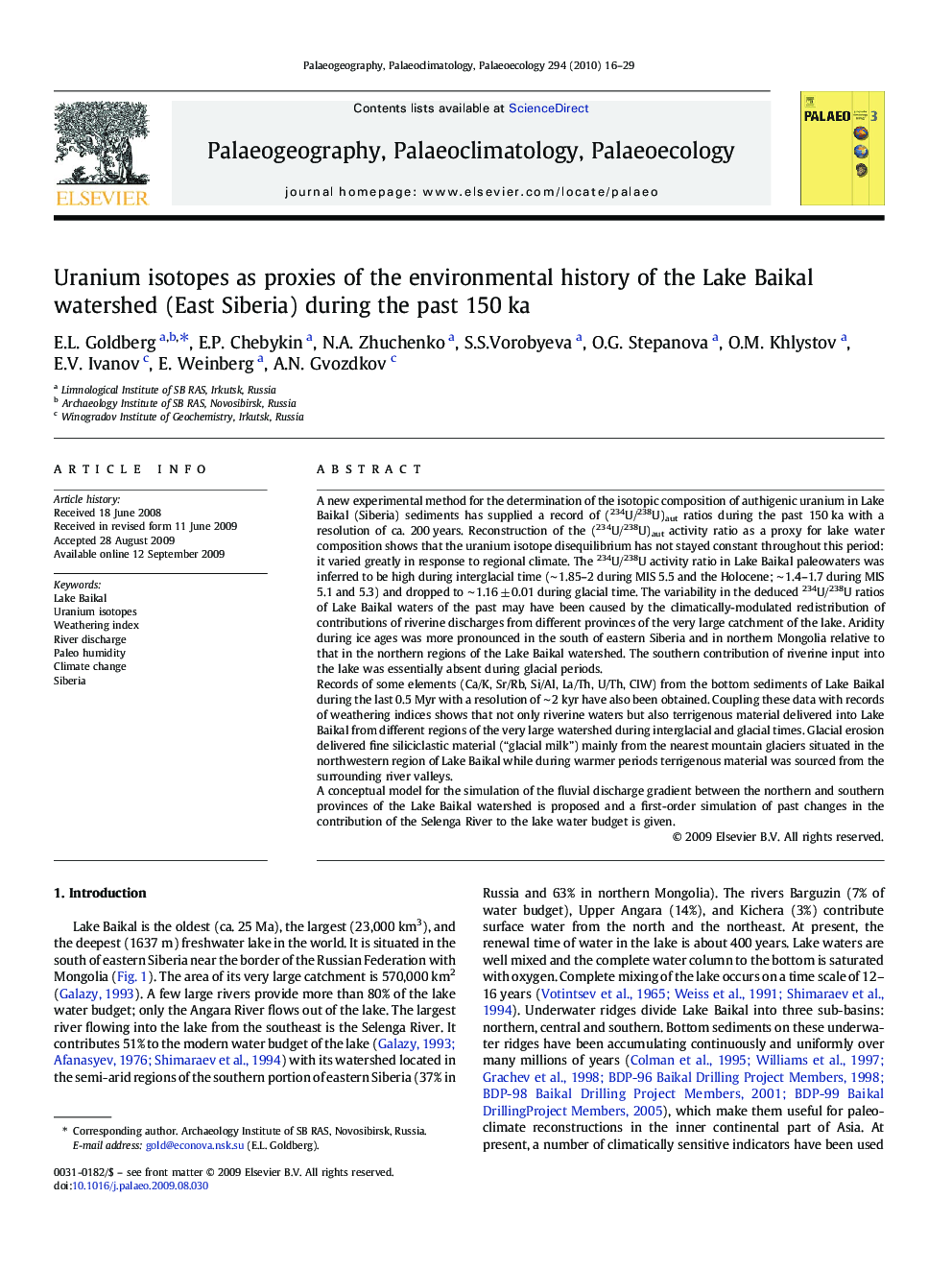| کد مقاله | کد نشریه | سال انتشار | مقاله انگلیسی | نسخه تمام متن |
|---|---|---|---|---|
| 4467692 | 1622274 | 2010 | 14 صفحه PDF | دانلود رایگان |

A new experimental method for the determination of the isotopic composition of authigenic uranium in Lake Baikal (Siberia) sediments has supplied a record of (234U/238U)aut ratios during the past 150 ka with a resolution of ca. 200 years. Reconstruction of the (234U/238U)aut activity ratio as a proxy for lake water composition shows that the uranium isotope disequilibrium has not stayed constant throughout this period: it varied greatly in response to regional climate. The 234U/238U activity ratio in Lake Baikal paleowaters was inferred to be high during interglacial time (∼ 1.85–2 during MIS 5.5 and the Holocene; ∼ 1.4–1.7 during MIS 5.1 and 5.3) and dropped to ∼ 1.16 ± 0.01 during glacial time. The variability in the deduced 234U/238U ratios of Lake Baikal waters of the past may have been caused by the climatically-modulated redistribution of contributions of riverine discharges from different provinces of the very large catchment of the lake. Aridity during ice ages was more pronounced in the south of eastern Siberia and in northern Mongolia relative to that in the northern regions of the Lake Baikal watershed. The southern contribution of riverine input into the lake was essentially absent during glacial periods.Records of some elements (Ca/K, Sr/Rb, Si/Al, La/Th, U/Th, CIW) from the bottom sediments of Lake Baikal during the last 0.5 Myr with a resolution of ∼ 2 kyr have also been obtained. Coupling these data with records of weathering indices shows that not only riverine waters but also terrigenous material delivered into Lake Baikal from different regions of the very large watershed during interglacial and glacial times. Glacial erosion delivered fine siliciclastic material (“glacial milk”) mainly from the nearest mountain glaciers situated in the northwestern region of Lake Baikal while during warmer periods terrigenous material was sourced from the surrounding river valleys.A conceptual model for the simulation of the fluvial discharge gradient between the northern and southern provinces of the Lake Baikal watershed is proposed and a first-order simulation of past changes in the contribution of the Selenga River to the lake water budget is given.
Journal: Palaeogeography, Palaeoclimatology, Palaeoecology - Volume 294, Issues 1–2, 1 August 2010, Pages 16–29